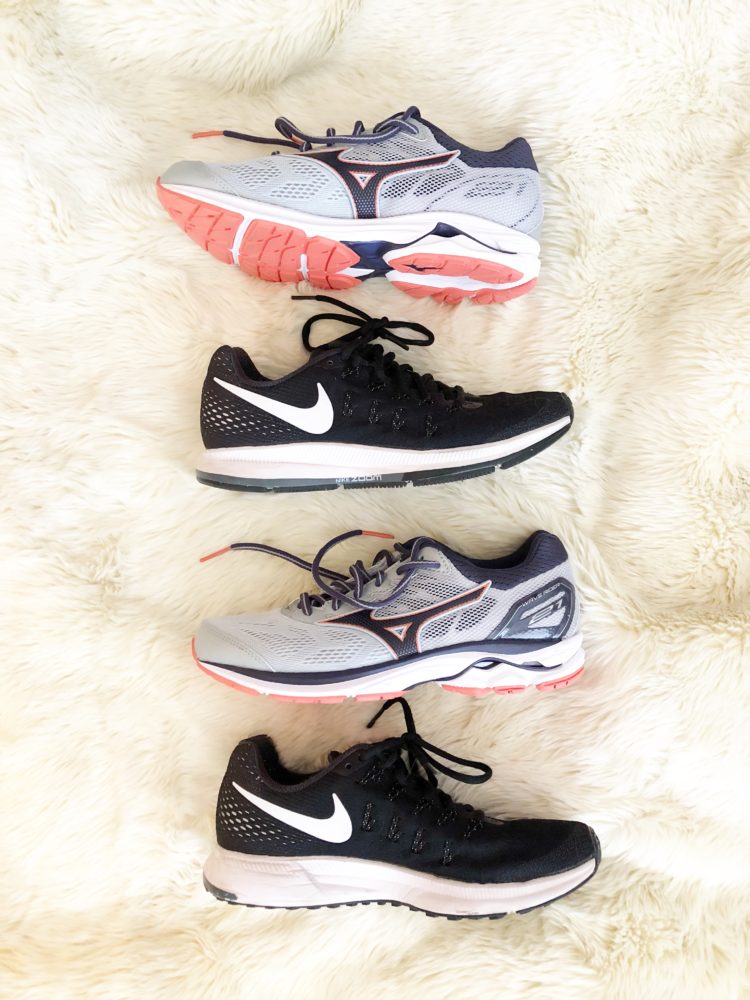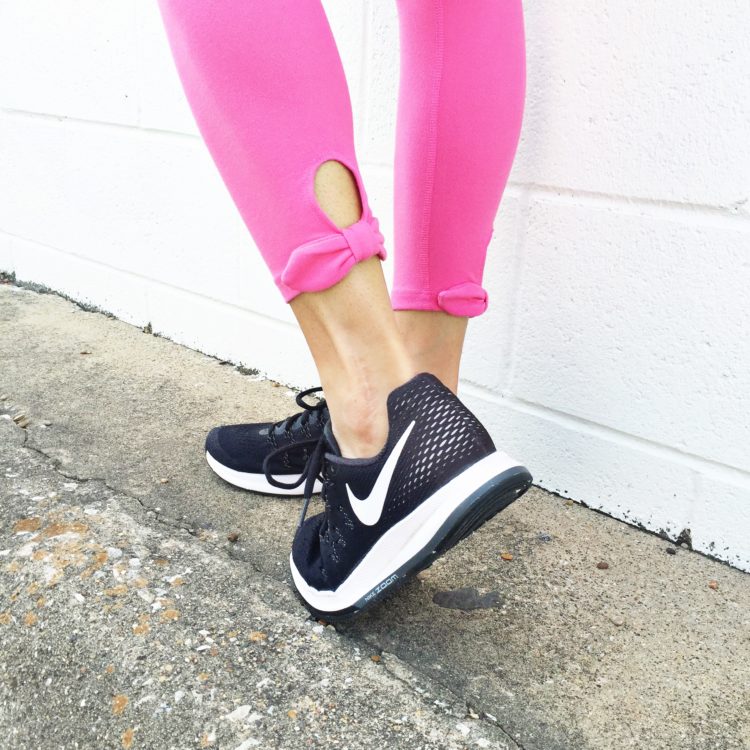
Hey guys! Welcome back to Fit Friday! I started this little mini series last Fall when I started training for my 4th half marathon. I was consistent for a bit, but I will be the first to admit that I didn’t post consistently. I wish I had a good excuse, but the truth is, life just got in the way. You guys know I have said from the beginning that my girls always come first, and that’s just what happened. Holiday school parties, dance recitals, cookie decorating…you know the drill.
However, one of my goals for Fleurdille this year is to manage my time better. So, I will be bringing back my Fit Friday posts every Friday. What can you expect from these posts? Variety! I am training for my 5th half marathon and so I will be keeping you guys up-to-date with that weekly. I am also heading to a yoga retreat later this month and will be sharing that journey with you, too. In addition to that, I am starting BBG with my sister next week and am excited to take y’all along with me!
So, to kick off our first Fit Friday post of the new year, we’re going to be talking all about running shoes. Now, before we get started you should know a couple of things. First, I am not an expert by any way, shape or form. I simply have a good amount of experience, a little bit of research, and my personal opinion. Second, each type of physical activity requires a different type of shoe. Today I am strictly talking about running shoes in relation to running distance. And finally, running shoes are not one size fits all. We all have very different shapes and sizes to our feet, so what works for me may not work well for you. That being said, I think you can all benefit from today’s post.
Let’s get started! There’s an old article (circa 2015) from the Huffington Post that outlines 7 things you should know before buying shoes. It’s actually a great article and so I’m going to summarize their points here for you. These are all points I consider when buying new shoes to train in and they are seriously so helpful!
What you should know before buying running shoes:
- Your fitness level & future aspirations – know what you want to do. Are you wanting to walk? to run? Will you be running outside? inside?
- Injuries you’ve had and how they affect your running – I’ve had multiple surgeries on my left ankle, so I know in advance that I cater to my left ankle by running more on my right. It throws my gait off a bit, so I adjust using shoe inserts.
- Your gait as you run – this is hard to know on your own. I suggest going to a place where they can watch you run and let the experts analyze it!
- How much space you need – I get into this a bit further down, but know how much space you’ll need around your toes; you definitely don’t want blisters!
- An adjustment plan – I am the worst at this one. Anytime you try new shoes, always have an adjustment plan to either alter the shoes you’re wearing or a time frame to switch to a different pair should you need to.
- Know the sole – knowing how padded your shoes are is key. This comes into play big time if you’re running long distance.
- How your shoes feel – there is so much to this. When you’re trying on shoes, I suggest wearing one brand on one foot and another brand on the other. You’ll know instantly – by feel – if one feels right or not. Go with your gut! If you don’t like it when you’re standing/walking, you won’t like it when you’re running.
All of these points are so spot on and for the most part, I thought I had them down pat. Before I started training for the Dallas Half Marathon that took place this past December, I went to Run On! to get a new pair of shoes.
The average life span for running shoes is between 300 and 500 miles. So, when I train for a half I always buy a new pair of shoes that I train in and wear on race day. I really do suggest going to a place like Run On! because they have trained runners that study your foot before suggesting shoes. They watch you run, walk, stand, and examine your old shoes to determine your gait. They also bring you multiple pairs out to try on to determine which feels best on your feet.

For my first 3 half marathons I ran in Mizunos. I have a pretty high arch and narrow feet, and for some reason Mizunos just do the trick for me. They are super padded, have plenty of space near the toes of my feet, and support my arch. I also add inserts into my feet because I supinate (roll my feet outward/upward), and the pad helps to even out my gait. The only qualm I had with my Mizunos was that they were obnoxious colors. Think bright purple, neon green, bright blue…not the prettiest. So before this last half I thought I’d change it up a bit. I decided I would run in Nikes.
The gentleman helping me at Run On! did tell me the Mizuno would be best, but that this specific model of Nike shoe was much improved and would probably do really well for me too. The Nike I chose was also a plain black color too, which was a nice break from neon.
If you watched my instastories earlier this week you probably think I’m going to go right into bashing the Nikes, but hear me out. I don’t hate them. In fact, the Nikes worked fine initially. They were a great shoe for long walks and for my short runs (2-3 miles). It wasn’t until my first long run (6 miles) that I started to doubt them. I remember running 6 miles with my sister and for the first time in my life feeling soreness on the bottom of my foot. I was a bit puzzled because I was in shape and had never felt that before. I started to think maybe I was doing something to throw my gait off.
Fast forward to my longer runs – 8, 9, even 10 miles – and it went downhill. You guys, I can’t even tell you how brutal. I got huge blisters on the sides of my toes (not so fun to feel for 2 hours straight), formed massive calluses on the edges of both feet, and struggled through the pain on the bottom of my feet. I thought the blisters came from my toe nails maybe being too long, but after a closer look I found out the real issue. My Nike shoes were too narrow. As my feet expanded from running, they had nowhere to go. The shoes were too narrow, which forced my toes to rub against each other. And, the thin pads/soles of the Nikes were the other cause of pain, which resulted in sore feet and calluses.
You may be asking yourself “well, why didn’t you just switch running shoes?” Great question! If I wasn’t training for a half I would have. Actually, if I had realized it sooner in my training I would have. My sister – who started out in Nikes, too – noticed pain around the 5/6 mile long runs and switched to Asics. Smart girl. I didn’t really figure it out until I was running 9 and 10 miles and by that point it was too close to race day to switch. So, I ran through the pain.
I have to share this with you guys though. On race day as my sister and I were checking everyone out in our corral (the area you wait in before starting), we noticed something super interesting. I would say less than 10% of the men and women around us were wearing Nike shoes. How crazy is that? I asked a long-time marathoner what his take on that was and he told me what I already suspected – Nike shoes are one of the worst for running distance in. Sure, olympians run in Nike shoes, but they’re also probably custom-made. For the average guy or gal, Nike shoes are simply not supportive enough and aren’t shaped ideally.
So all in all, I would say that training for a half or full in Nike shoes is probably not the best idea. As far as the best shoe? My vote is with Mizunos. However, like I said earlier, every foot is different, so choose what works best for you!
Hope y’all found this helpful!




